-
Урок 1.
00:03:40
Welcome to the course
-
Урок 2.
00:01:02
The rules of #100DaysOfCode
-
Урок 3.
00:04:51
Topics covered
-
Урок 4.
00:02:03
Why Python for #100DaysOfCode
-
Урок 5.
00:02:21
Course flow
-
Урок 6.
00:01:30
Meet your instructors
-
Урок 7.
00:01:11
Need a Python primer?
-
Урок 8.
00:02:14
Git the source code
-
Урок 9.
00:01:29
Three devs are better than one
-
Урок 10.
00:00:34
Julian's setup
-
Урок 11.
00:00:36
Bob's setup
-
Урок 12.
00:02:46
Michael's setup
-
Урок 13.
00:02:48
PyBites code challenge platform
-
Урок 14.
00:02:05
Video player: A quick feature tour
-
Урок 15.
00:00:59
Introduction to Flask
-
Урок 16.
00:02:16
Your Next 4 Days
-
Урок 17.
00:03:40
Install and Setup Flask
-
Урок 18.
00:02:57
Setup your Flask app as a package
-
Урок 19.
00:02:33
Create __init.py__
-
Урок 20.
00:03:10
Define your Flask app routes in routes.py
-
Урок 21.
00:03:42
Run your Flask app!
-
Урок 22.
00:03:03
Persistent FLASK_APP environment variable using python-dotenv
-
Урок 23.
00:04:52
Creating a basic index.html Flask Template
-
Урок 24.
00:07:19
Creating the base.html Flask Template
-
Урок 25.
00:04:30
A new template for a 100DaysOfCode page
-
Урок 26.
00:03:25
Using CSS, create Menu Bar in the Base Template
-
Урок 27.
00:04:57
Day 4: Your Turn - What did we learn?
-
Урок 28.
00:01:05
HTML Chapter Intro
-
Урок 29.
00:01:43
HTML is easy right?
-
Урок 30.
00:03:41
A little HTML history
-
Урок 31.
00:00:51
Our editor for this chapter: WebStorm
-
Урок 32.
00:01:16
Yahoo, circa 1996
-
Урок 33.
00:12:22
Building Yaahoo
-
Урок 34.
00:02:42
Concept: Core HTML tags
-
Урок 35.
00:03:41
Form basics
-
Урок 36.
00:02:55
Describing form elements
-
Урок 37.
00:05:37
Client-side validation
-
Урок 38.
00:02:03
Your-turn
-
Урок 39.
00:01:39
Lesson introduction
-
Урок 40.
00:04:50
What are APIs, why you want them and API Star
-
Урок 41.
00:06:51
Getting fake cars data with Mockeroo
-
Урок 42.
00:04:07
API Star structure and its type system
-
Урок 43.
00:11:39
API methods: GET and POST, testing with Postman
-
Урок 44.
00:03:09
API methods: PUT and DELETE
-
Урок 45.
00:11:15
Testing your API with pytest
-
Урок 46.
00:02:42
Day 3 & 4 - Your turn: build your own API
-
Урок 47.
00:01:23
CSS chapter intro
-
Урок 48.
00:03:38
Goals of this chapter
-
Урок 49.
00:04:12
CSS Zen Garden
-
Урок 50.
00:03:51
Concept: Structure of a CSS file
-
Урок 51.
00:01:20
Demo app introduction
-
Урок 52.
00:04:14
Demo: Exploring CSS selectors
-
Урок 53.
00:01:56
Concept: Inheritance and specialization
-
Урок 54.
00:04:18
Demo: Box model
-
Урок 55.
00:01:11
Concept: Controlling the box in CSS
-
Урок 56.
00:07:19
Demo: Layout
-
Урок 57.
00:04:03
Demo: Floating elements
-
Урок 58.
00:00:59
Concept: Floating elements
-
Урок 59.
00:04:02
Areas to research further
-
Урок 60.
00:01:08
Your-turn: Day 2
-
Урок 61.
00:02:20
Your-turn: Day 3
-
Урок 62.
00:01:41
Your-turn: Day 4
-
Урок 63.
00:00:35
Introduction: Calling APIs in Flask
-
Урок 64.
00:02:29
Your 4 day overview
-
Урок 65.
00:04:38
Environment setup
-
Урок 66.
00:07:11
Passing variables between Flask app code and a Template
-
Урок 67.
00:03:47
Working with the Chuck Norris API
-
Урок 68.
00:05:24
Passing our Chuck Norris joke to a Template
-
Урок 69.
00:01:36
Investigating the Poke API
-
Урок 70.
00:08:17
Creating a form in our Pokemon Template
-
Урок 71.
00:06:46
Breaking down the Poke API response
-
Урок 72.
00:06:52
Writing the Pokemon route
-
Урок 73.
00:06:57
Returning the data to the Pokemon Template
-
Урок 74.
00:04:13
Day 4: Your Turn - What did we learn?
-
Урок 75.
00:02:02
Introducing asynchronous web programming
-
Урок 76.
00:04:35
Synchronous execution concepts
-
Урок 77.
00:06:16
Synchronous execution demo
-
Урок 78.
00:09:10
Asynchronous Python execution with async and await
-
Урок 79.
00:02:25
Asynchronous execution concepts
-
Урок 80.
00:02:43
Your turn: Day 2 - Async program
-
Урок 81.
00:02:08
Flask will never be async capable
-
Урок 82.
00:07:12
Introducing our web app: The cityscape API
-
Урок 83.
00:02:59
Converting from Flask to Quart
-
Урок 84.
00:05:11
Adding an async view method / controller method
-
Урок 85.
00:02:34
Async all the things
-
Урок 86.
00:02:09
Concept: Quart
-
Урок 87.
00:04:09
Performance comparison: Flask vs Quart
-
Урок 88.
00:01:42
Your turn: Day 4 - Async Flask conversion
-
Урок 89.
00:00:49
Lesson introduction
-
Урок 90.
00:02:52
4 day plan
-
Урок 91.
00:03:17
History and why JavaScript
-
Урок 92.
00:04:23
How to run JS in your browser / terminal / IDE
-
Урок 93.
00:05:28
Variables (var vs let) and data types
-
Урок 94.
00:04:51
Arrays
-
Урок 95.
00:05:55
Conditionals and control flow
-
Урок 96.
00:09:19
Functions
-
Урок 97.
00:03:53
Objects
-
Урок 98.
00:03:11
Day 2: 4 JS exercises
-
Урок 99.
00:08:04
The Document Object Model (DOM) - targeting elements
-
Урок 100.
00:08:59
DOM part II: add/remove childs, override CSS, event listeners
-
Урок 101.
00:02:55
Debugging JavaScript
-
Урок 102.
00:03:31
Common JS gotchas
-
Урок 103.
00:03:09
Further study
-
Урок 104.
00:04:08
Day 4: simple calculator and calorie tracker
-
Урок 105.
00:00:37
Introduction: Static Sites
-
Урок 106.
00:02:01
Your 4 day overview
-
Урок 107.
00:04:53
What exactly is a static site anyway?
-
Урок 108.
00:01:46
Setup: Create your repo
-
Урок 109.
00:04:45
Configure Pelican
-
Урок 110.
00:06:49
Writing our first post!
-
Урок 111.
00:03:48
Generating the site
-
Урок 112.
00:05:11
Setting up and deploying to Netlify
-
Урок 113.
00:04:30
Linking to static content
-
Урок 114.
00:02:23
How sweet is Netlify auto-build?
-
Урок 115.
00:03:48
Creating a dedicated static page
-
Урок 116.
00:01:36
Custom domains on Netlify
-
Урок 117.
00:03:20
What did we learn?
-
Урок 118.
00:04:07
Introducing SQLAlchemy
-
Урок 119.
00:01:47
Our demo app: A scooter sharing startup
-
Урок 120.
00:01:35
Who uses SQLAlchemy?
-
Урок 121.
00:02:10
SQLAlchemy Architecture
-
Урок 122.
00:01:13
Scooter share data model
-
Урок 123.
00:03:39
Setting up our app
-
Урок 124.
00:05:42
Modeling with classes
-
Урок 125.
00:03:34
The rest of the classes
-
Урок 126.
00:03:58
Connecting to our DB
-
Урок 127.
00:03:29
Creating the database schema and tables
-
Урок 128.
00:02:36
The database is created
-
Урок 129.
00:04:25
Relationships
-
Урок 130.
00:06:02
Inserts
-
Урок 131.
00:04:38
The rest of the queries
-
Урок 132.
00:02:05
Importing starter data
-
Урок 133.
00:06:32
Finishing the app
-
Урок 134.
00:00:23
Listen to the interview
-
Урок 135.
00:03:17
Your turn: Days 3 and 4
-
Урок 136.
00:01:35
Pyramid chapter intro
-
Урок 137.
00:01:57
Our demo application
-
Урок 138.
00:02:29
A spectrum of frameworks
-
Урок 139.
00:02:57
Pyramid principles
-
Урок 140.
00:00:24
Get back story
-
Урок 141.
00:02:16
Creating the app: Intro
-
Урок 142.
00:06:32
Creating the app: Via the CLI
-
Урок 143.
00:02:46
Creating the app: Via PyCharm
-
Урок 144.
00:04:31
A tour of a Pyramid project
-
Урок 145.
00:04:29
Reorganizing our app
-
Урок 146.
00:04:35
Adding the data models
-
Урок 147.
00:04:05
Home page (fake data)
-
Урок 148.
00:06:52
Home page (database data)
-
Урок 149.
00:01:43
HTML towards details and a better design
-
Урок 150.
00:03:00
Design and hero images
-
Урок 151.
00:06:07
Adding the details route
-
Урок 152.
00:05:49
Paying a bill: Submitting forms
-
Урок 153.
00:02:52
Concept: Chameleon
-
Урок 154.
00:03:14
Your-turn: Day 3
-
Урок 155.
00:00:45
Your-turn: Day 4
-
Урок 156.
00:02:11
Intro: what is React, why use it?
-
Урок 157.
00:07:38
Brushing up some ES6 (modern) JS
-
Урок 158.
00:04:20
Bootstrap our app with create-react-app
-
Урок 159.
00:06:49
JSX and rendering a tip component
-
Урок 160.
00:02:43
Interlude: Python Tips API back-end setup
-
Урок 161.
00:05:46
Using classes and state in React
-
Урок 162.
00:08:07
Calling the tips API using axios
-
Урок 163.
00:04:41
Filter tips while typing in a search field
-
Урок 164.
00:04:41
Style matching tips with react-highlight-words
-
Урок 165.
00:01:00
Day 2: build your own API front-end using React
-
Урок 166.
00:07:01
Structuring our Free Monkey (hangman) app
-
Урок 167.
00:02:53
Constructor, componentDidMount, and first render
-
Урок 168.
00:05:18
Setting the initial game state
-
Урок 169.
00:03:15
Creating letter buttons with event handlers
-
Урок 170.
00:06:07
Matching guess letters and updating the state
-
Урок 171.
00:02:32
Adding CSS styles to the buttons upon guessing
-
Урок 172.
00:08:06
Check win/loss scenarios, adding a reset game button
-
Урок 173.
00:02:32
Day 4: build your own game using React
-
Урок 174.
00:00:31
Lesson introduction
-
Урок 175.
00:01:29
The structure of this 4 day module
-
Урок 176.
00:03:43
Django starter and architecture
-
Урок 177.
00:01:54
Demo quote CRUD app we will build
-
Урок 178.
00:03:00
Get Django up and running
-
Урок 179.
00:04:10
Basic Django configuration
-
Урок 180.
00:05:18
URL routing and your first view
-
Урок 181.
00:04:21
Create a Django model and migrate it to the DB
-
Урок 182.
00:06:28
Playing with the ORM in Django's shell
-
Урок 183.
00:01:19
Day 2: practice yourself
-
Урок 184.
00:06:17
The quotes app url mapping
-
Урок 185.
00:01:59
Create a Django form
-
Урок 186.
00:02:49
Write a view to list all the quotes
-
Урок 187.
00:04:55
Static files and the base template
-
Урок 188.
00:06:40
Template settings and create a child template
-
Урок 189.
00:04:00
Make a view/page to view an individual quote
-
Урок 190.
00:06:44
Write a view to add a new quote
-
Урок 191.
00:02:58
Write a view to edit a quote
-
Урок 192.
00:04:07
Write a view to delete a quote
-
Урок 193.
00:09:39
Refactor function-based into class-based views
-
Урок 194.
00:03:10
Add the quotes app to Django's admin interface
-
Урок 195.
00:01:30
Day 4: practice yourself
-
Урок 196.
00:01:18
Lesson introduction
-
Урок 197.
00:06:01
Virtual environment, dependencies, pytest starter code (fixtures)
-
Урок 198.
00:06:59
Selenium's find_element_by methods, test #1: homepage
-
Урок 199.
00:08:08
Test #2: testing individual book pages and JS autocomplete
-
Урок 200.
00:06:20
Test #3: testing the login, using the debugger with pytest
-
Урок 201.
00:09:45
Test #4: a test function for adding/deleting a book
-
Урок 202.
00:04:16
Test #5: testing changing nav links upon logout
-
Урок 203.
00:01:08
Optional Code Challenge: test a simple Django app
-
Урок 204.
00:00:50
Introducing responder
-
Урок 205.
00:02:10
Key features
-
Урок 206.
00:00:48
Foundational projects
-
Урок 207.
00:01:08
What API will we build?
-
Урок 208.
00:01:44
Setting up the project
-
Урок 209.
00:01:46
Adding the 'hello world' view method
-
Урок 210.
00:02:26
Using dynamic HTML templates (Jinja2)
-
Урок 211.
00:01:35
Serving static files
-
Урок 212.
00:02:51
API view methods
-
Урок 213.
00:03:03
Adding a data backend
-
Урок 214.
00:04:11
Implementing the search APIs
-
Урок 215.
00:04:28
Cleanup and refactoring for real web apps
-
Урок 216.
00:02:01
Responder core concepts
-
Урок 217.
00:00:54
Introduction: Twilio
-
Урок 218.
00:01:50
Your single day overview
-
Урок 219.
00:03:00
Twilio account setup
-
Урок 220.
00:01:07
Obtaining your Twilio API key
-
Урок 221.
00:04:41
Write a quick and easy Twilio SMS script
-
Урок 222.
00:02:13
Twilio UI: Verified numbers and usage stats
-
Урок 223.
00:01:58
What did we learn?
-
Урок 224.
00:00:43
Chapter intro
-
Урок 225.
00:02:07
What is full stack web development?
-
Урок 226.
00:01:01
What application will we build?
-
Урок 227.
00:00:54
Introducing Anvil
-
Урок 228.
00:02:42
Anvil's building blocks
-
Урок 229.
00:02:09
Anvil: New project
-
Урок 230.
00:02:28
Adding navigation
-
Урок 231.
00:02:07
Subforms
-
Урок 232.
00:04:20
Linking the forms
-
Урок 233.
00:02:09
Building the add document form
-
Урок 234.
00:04:45
Add new document validation
-
Урок 235.
00:02:32
Data tables
-
Урок 236.
00:03:27
Server-side code
-
Урок 237.
00:02:54
Creating the document in the database
-
Урок 238.
00:04:52
Add doc form finale
-
Урок 239.
00:06:55
All docs form
-
Урок 240.
00:01:32
Adding filtering to all docs form
-
Урок 241.
00:03:05
Adding filtering (continued)
-
Урок 242.
00:02:48
Viewing document details
-
Урок 243.
00:01:56
Publishing our Anvil app on the Internet
-
Урок 244.
00:02:56
Concepts of Anvil
-
Урок 245.
00:01:14
Lesson introduction
-
Урок 246.
00:05:17
The structure of this 4 day module
-
Урок 247.
00:04:57
Installing and configuring django-registration
-
Урок 248.
00:02:58
Setting up urls.py for the two-step activation workflow
-
Урок 249.
00:04:39
Setting required django-registration templates
-
Урок 250.
00:01:21
Setting up a SendGrid account
-
Урок 251.
00:07:22
Django SMTP configuration and testing out email
-
Урок 252.
00:05:01
Adding login and logout links to the navigation bar
-
Урок 253.
00:03:30
Update the Quote model to associate quotes with users
-
Урок 254.
00:06:31
Update templates to only show edit buttons to quote owners
-
Урок 255.
00:04:49
Protecting views with Django's @login_required decorator
-
Урок 256.
00:01:25
Day 3 + 4: practice yourself
-
Урок 257.
00:00:33
Introduction: Flask Login
-
Урок 258.
00:03:25
Let's start by setting some expectations
-
Урок 259.
00:03:16
Your 4 day overview
-
Урок 260.
00:03:01
Setup: Flask and Project directory
-
Урок 261.
00:06:22
Setup: A Barebones Flask app
-
Урок 262.
00:06:19
Define your database model
-
Урок 263.
00:02:45
Specify the db object in __init.py__
-
Урок 264.
00:00:53
Setup: Install SQLite DB Browser
-
Урок 265.
00:03:17
Create the database!
-
Урок 266.
00:05:01
Make the create-user Jinja Template
-
Урок 267.
00:05:46
Add functionality to create users
-
Урок 268.
00:01:15
Specify the app secret key
-
Урок 269.
00:02:41
Let's add some users!
-
Урок 270.
00:08:33
Incorporate Flask-Login
-
Урок 271.
00:03:41
Test it! Login to the app
-
Урок 272.
00:03:44
Create a quick logout page
-
Урок 273.
00:04:30
What did we learn?
-
Урок 274.
00:02:29
Introduction to db migrations
-
Урок 275.
00:02:33
Seeing the problem in action
-
Урок 276.
00:03:45
Installing Alembic
-
Урок 277.
00:01:48
Fix an error: Alembic distribution not found
-
Урок 278.
00:02:04
Concept: Review configuring Alembic
-
Урок 279.
00:05:09
Automatically detecting schema changes
-
Урок 280.
00:01:44
Where is the DB version stored?
-
Урок 281.
00:03:02
Concept: Alembic migrations
-
Урок 282.
00:03:17
Your-turn: Days 2, 3, and 4
-
Урок 283.
00:01:00
Introduction: Heroku
-
Урок 284.
00:01:34
Your 4 day overview
-
Урок 285.
00:02:39
Setup your Heroku account and install the Heroku CLI
-
Урок 286.
00:04:37
Setting up the local app and Heroku environment
-
Урок 287.
00:07:39
Deploy and launch your first Heroku app!
-
Урок 288.
00:03:53
What are Heroku addons?
-
Урок 289.
00:02:45
Install Heroku scheduler
-
Урок 290.
00:06:25
Automate sending emails with Heroku scheduler
-
Урок 291.
00:03:46
Heroku SendGrid addon setup
-
Урок 292.
00:06:24
Use SendGrid to send an email
-
Урок 293.
00:02:53
What did we learn?
-
Урок 294.
00:02:01
Lesson intro
-
Урок 295.
00:05:02
Virtual env, install dependencies and quotes app
-
Урок 296.
00:07:54
Writing a custom django-admin command
-
Урок 297.
00:08:07
Create a simple Django REST API
-
Урок 298.
00:03:41
Implement the other CRUD methods
-
Урок 299.
00:07:43
Django REST permissions: authentication and authorization
-
Урок 300.
00:05:16
API documentation with Swagger
-
Урок 301.
00:02:59
Day 3 + 4: Your turn - build your own API
-
Урок 302.
00:00:45
Introduction: Web Scraping
-
Урок 303.
00:03:57
Your next 4 days
-
Урок 304.
00:02:27
Prepare to scrape!
-
Урок 305.
00:08:32
Dive into BeautifulSoup4 and Talk Python
-
Урок 306.
00:07:31
Write a Talk Python Training web scraping script
-
Урок 307.
00:03:31
Installing and introducing newspaper3k
-
Урок 308.
00:08:08
Extra! Extra! Student scrapes a news article!
-
Урок 309.
00:07:38
What did we learn?
-
Урок 310.
00:01:20
Lesson intro
-
Урок 311.
00:01:21
4 day plan
-
Урок 312.
00:03:44
Project: automate #100DaysOfCode tweeting
-
Урок 313.
00:04:00
Dependencies and outline script
-
Урок 314.
00:04:15
Manage config data with configparser
-
Урок 315.
00:03:48
Turn on logging
-
Урок 316.
00:06:36
Get a tweet with requests and BeautifulSoup
-
Урок 317.
00:07:08
Post to Twitter with tweepy
-
Урок 318.
00:05:47
Easy command line interface with argparse
-
Урок 319.
00:01:37
Day 2 - Your turn / Twitter API practice
-
Урок 320.
00:01:41
Project: random book slash command
-
Урок 321.
00:03:13
Create a Slack app and slash command
-
Урок 322.
00:05:13
Create a Flask app and call our books API
-
Урок 323.
00:03:13
Response data and Slack message formatting
-
Урок 324.
00:03:23
Testing out the slash command with ngrok
-
Урок 325.
00:01:21
Day 4 - Your turn / Slack API practice
-
Урок 326.
00:01:29
Why test web apps?
-
Урок 327.
00:02:35
Testing challenges of web applications
-
Урок 328.
00:01:47
3 types of tests
-
Урок 329.
00:01:51
Setting up the app to be tested
-
Урок 330.
00:05:26
Adding view models
-
Урок 331.
00:02:43
View models applied to details page
-
Урок 332.
00:03:19
View models and forms
-
Урок 333.
00:01:56
Concept: View models
-
Урок 334.
00:05:44
Our first unit test
-
Урок 335.
00:03:42
Mocking out database access
-
Урок 336.
00:05:26
More view model tests
-
Урок 337.
00:01:18
Concept: View model unit tests
-
Урок 338.
00:04:14
View unit tests: index page
-
Урок 339.
00:01:51
Running all the tests at once
-
Урок 340.
00:01:45
Concept: Testing view methods
-
Урок 341.
00:05:19
Writing the functional tests
-
Урок 342.
00:01:42
Concept: Functional tests
-
Урок 343.
00:02:57
Concept: Web testing pareto principle
-
Урок 344.
00:03:14
Your turn: Testing a web app
-
Урок 345.
00:02:29
Lesson intro
-
Урок 346.
00:02:20
A practical Lambda use case: CodeChalleng.es
-
Урок 347.
00:04:36
4 day plan, PEP8 Checker app, setup
-
Урок 348.
00:09:18
Build a simple Bottle web app
-
Урок 349.
00:04:40
First Lambda: a simple calculator (using operator)
-
Урок 350.
00:05:05
Creating Lambda test events
-
Урок 351.
00:04:08
The glue: setting up AWS Gateway API
-
Урок 352.
00:11:39
Second Lambda: PEP8 Checker (using pycodestyle)
-
Урок 353.
00:05:36
Uploading a Lambda with external dependencies
-
Урок 354.
00:02:47
Day 3 + 4: Your turn - create your own Lambda
-
Урок 355.
00:01:20
Deploy introduction
-
Урок 356.
00:02:59
Deployment moving parts overview
-
Урок 357.
00:01:38
Deployment: What app to install?
-
Урок 358.
00:02:18
Where to host our server
-
Урок 359.
00:03:01
Creating our virtual server
-
Урок 360.
00:01:48
Connecting and updating the Linux server
-
Урок 361.
00:05:22
Server software config
-
Урок 362.
00:05:20
Getting the Python source files on the server
-
Урок 363.
00:05:49
Setting up uWSGI
-
Урок 364.
00:04:14
Serving through nginx
-
Урок 365.
00:01:48
A final check-in on the server
-
Урок 366.
00:02:58
Concept: uWSGI setup
-
Урок 367.
00:01:36
Concept: nginx setup
-
Урок 368.
00:01:01
Deploying Flask web apps
-
Урок 369.
00:01:01
Deploying Django web apps
-
Урок 370.
00:02:52
Your turn: Deployment
-
Урок 371.
00:01:57
Vue.js Chapter Introduction
-
Урок 372.
00:02:21
What does a simple Vue.js app look like?
-
Урок 373.
00:03:20
The starter project: Movie Exploder
-
Урок 374.
00:04:28
Creating the Vue app instance
-
Урок 375.
00:02:23
Enabling the Vue.js Plugin in PyCharm and WebStorm
-
Урок 376.
00:02:20
Repeating data and HTML blocks
-
Урок 377.
00:01:03
Concept: Repeating data
-
Урок 378.
00:01:56
First, with fake data
-
Урок 379.
00:03:03
Detailed movie details
-
Урок 380.
00:01:33
Conditional rendering
-
Урок 381.
00:01:05
Concept: Conditional rendering
-
Урок 382.
00:03:19
Searching movies event
-
Урок 383.
00:01:35
Top ten button
-
Урок 384.
00:03:06
Displaying and selecting genres
-
Урок 385.
00:02:58
A nicer dropdown
-
Урок 386.
00:01:15
Selecting the genre
-
Урок 387.
00:02:05
Install the Vue.js devtools
-
Урок 388.
00:02:04
Your turn: Day 2
-
Урок 389.
00:05:23
Searching movies via the API and axios
-
Урок 390.
00:01:06
Concept: Calling API with axios
-
Урок 391.
00:03:10
Genres via the service
-
Урок 392.
00:02:12
Top 10 movies from API
-
Урок 393.
00:02:29
Movies by genre through the API
-
Урок 394.
00:02:32
Setting attributes with Vue.js
-
Урок 395.
00:00:55
Look; no semicolons
-
Урок 396.
00:01:26
Your turn: Day 4
-
Урок 397.
00:01:35
Introduction to Docker chapter
-
Урок 398.
00:03:10
Container history: Boats
-
Урок 399.
00:03:29
Container history: Operating systems
-
Урок 400.
00:02:26
Installing Docker on macOS, Windows, and Linux
-
Урок 401.
00:04:03
Docker nomenclature
-
Урок 402.
00:02:28
Code setup
-
Урок 403.
00:01:55
Choosing a Docker base image
-
Урок 404.
00:03:17
Running a Docker container
-
Урок 405.
00:01:01
Productivity with Docker plugins for Pycharm
-
Урок 406.
00:06:14
Building a Docker image
-
Урок 407.
00:03:52
Installing glances
-
Урок 408.
00:05:48
Nginx config for our static site
-
Урок 409.
00:03:59
Serving external traffic from Docker
-
Урок 410.
00:02:34
Using the local services container
-
Урок 411.
00:10:56
Docker image for our Python services
-
Урок 412.
00:03:40
Running the system as a whole
-
Урок 413.
00:02:15
Docker cleanup and reclaiming disk space
-
Урок 414.
00:03:16
Keep your Docker DRY (refactoring)
-
Урок 415.
00:02:09
Concept: Dockerfile for the static site
-
Урок 416.
00:03:48
Concept: Core Docker commands
-
Урок 417.
00:02:37
Your-turn, day 2
-
Урок 418.
00:02:20
Concept: Introduction to docker-compose
-
Урок 419.
00:08:28
Building the services with docker-compose
-
Урок 420.
00:01:17
Your-turn, day 4
-
Урок 421.
00:00:31
You've done it!
-
Урок 422.
00:01:22
What you've learned
-
Урок 423.
00:00:30
Make sure you have the source
-
Урок 424.
00:01:08
Stay immersed in Python
-
Урок 425.
00:01:11
Continue to challenge yourself with PyBites
-
Урок 426.
00:01:12
Thanks and goodbye
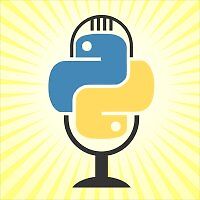

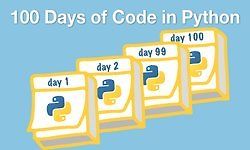
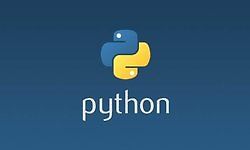
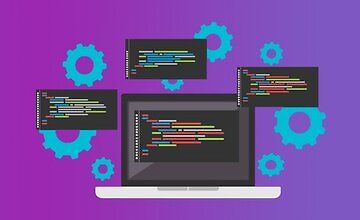
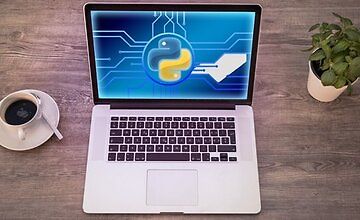
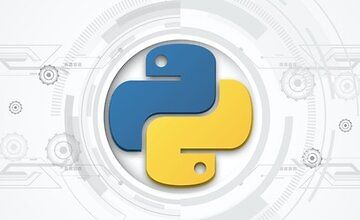
https://github.com/talkpython/100daysofweb-with-python-course